Anniversaries for WWI and WWII
2014 marks the 100th anniversary of the start of World War I and the 70th anniversary of the D-Day invasion of World War II – two of the most momentous and horrific events in our human history.
Learning about WWI at the National World War I Museum – Kansas City
When my spouse, Jim Hammer, and I learned that the National World War I Museum was close by, in Kansas City, Mo., we decided to go for a visit. We were not disappointed. The exhibits are phenomenal and heart-rending, especially those that depict life in the trenches. Those exhibits were brilliantly created to show an example of a pristine trench at the beginning of the war and a muddy, bloody, body-filled trench at the end of the war.
For me it was the combination of exhibits and written words of the survivors that was most impressive. The excerpts below describe the effects of a poison gas attack.
“The scene was more than sad; it was tragic. Everywhere were fugitives: Territorials, joyeux, tirailleurs, Zouaves, artillerymen – without weapons, haggard, greatcoats thrown away or wide open, running around like madmen, begging for water in loud cries, spitting blood, some even rolling on the ground making desperate efforts to breathe. I shall see for a long time, in particular, a staggering joyeux who with loud cries demanded water and noticing me, called, ‘Colonel, those bastards have poisoned us!’ No effort was made to stop the bewildered fugitives. We soon gave that up. It was no longer soldiers who were escaping but poor souls who had become suddenly insane. All along the canal was the same scene: without noticing bullets or shells, a crowd of unfortunate sufferers on both banks had come to beg for water to relieve their horrible sufferings.” (Peter Hart, p. 140)
“If you’ve seen a bright-eyed fellow suddenly turned to a goggling idiot, with his own brains trickling down into his eyes from under his cap, as I’ve done, you’re either a peacemaker or a degenerate. . . .” (LOOK, p. 55)
Europeans expected that WWI would be over by Christmas of 1914 but they were sadly mistaken as this postcard shows in typically dry British humor. The caption reads: “Cheer up, the first 7 years will be the worst” and depicts a British soldier smoking a cigarette while sitting on a sand bag, like the ones used to line the trenches.
Having stayed out of the fighting for three years, Germany was surprised when America finally entered the fighting in 1917. The postcard below is a warning about American fighting spirit and skill.
After the war some communities gave out brass crosses to their returning troops. The one below is from Lincoln County, Kansas, where I grew up. You’ll notice that the ribbon is missing and I’ve been unable to find photos that show what the original ribbon looked like.
The engraving on the back reads: Presented by the people of Lincoln Co. Kansas in grateful recognition of patriotic services in the world war 1917-1918″
As you probably recall, people of that time believed that they were fighting the war to end all wars. Hitler and Nazi Germany provided them wrong.
The 70th Anniversary of the D-Day Landings of WWII
Which brings us to another event – the 70th anniversary of the D-Day landings on Normandy beach. The following front page headline, map and story about Eisenhower are from the June 6, 1944 edition of the Minneapolis Star Journal.
Our children and grand children need to learn about the events leading up to WWI and WWII because those conditions still exist today. They need to understand that the old saying “those who forget history are destined to repeat it” is true. The commemorative events that were held in the US and in Europe weren’t celebrating war. They’ were an acknowledgement of the tremendous sacrifices and suffering of millions of men, women, and children who were caught up in these horrific conflagrations. Our descendents need to understand the costs of appeasement, conflict, ethnic and racial hatred, religious intolerance, the insatiable demand for more land and more natural resources, and nationalism among other factors that contribute to an atmosphere of war.
At the same time, our children and grand children need to learn how to compromise and collaborate, the value and strength of diversity, and the importance of respect for self and other if they are to do better than previous generations have done when conflict occurs.
Some days I feel hopeful for the future of the human race. But there are other days . . .
Links to WWI and WWII events at home and abroad
http://www.greatwar.co.uk/events/2014-2018-ww1-centenary-events.htm
The website above lists events in Belguim, France, the U.K., Australia, New Zealand, and the U.S. plus WWI remembrance projects.
http://www.dday.org/70th-anniversary-events
Notes
LIFE, vol. 8, No. 6, Spring-Summer 1985.
LOOK, vol. 28, No. 16, August 11, 1964.
Peter Hart. The Great War. 2013. Oxford: Oxford University Press.
Minneapolis Star Journal, vol. LXVI, No. 165, June 6, 1944.
The New Matthews-Northrup Global Atlas of the World at War. Cleveland and New York: The World Publishing Company, publishing date unknown.
Thank you to Linda Kelly and Peter Chapman for explaining the WWI comic postcard about “The first 7 years. . .”


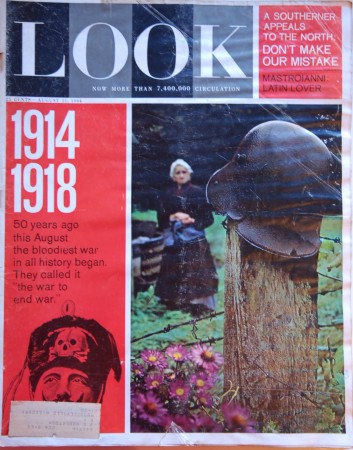
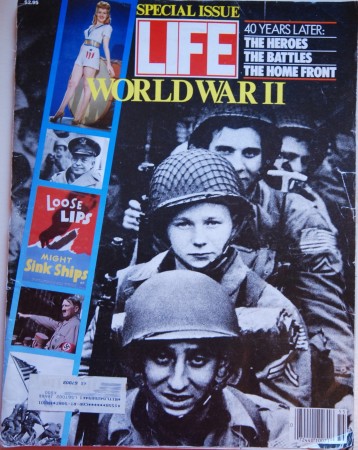
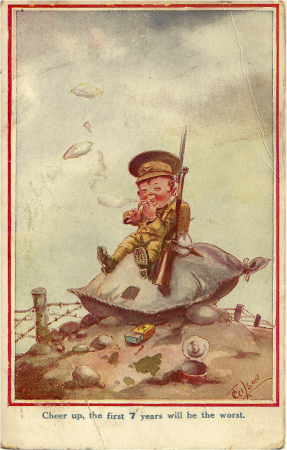
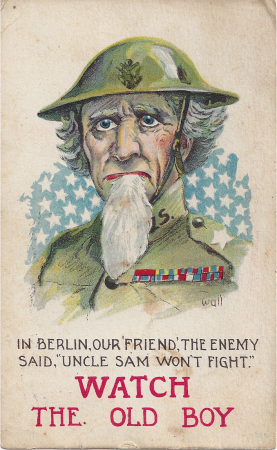
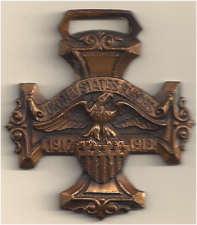

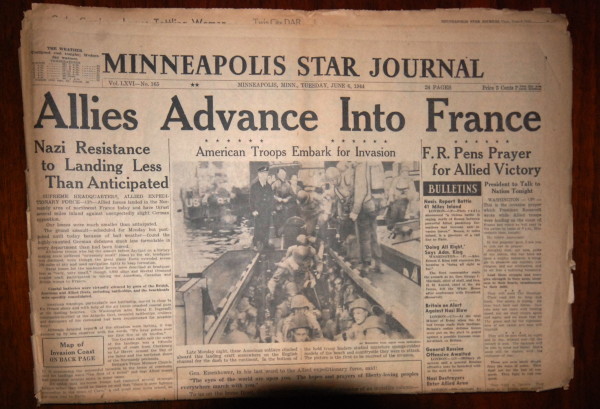

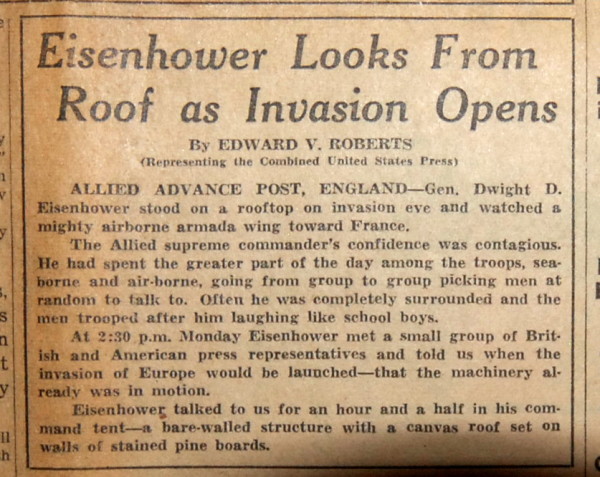
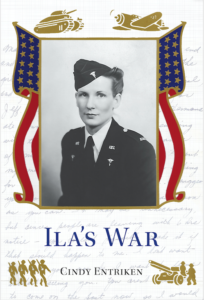
I’m not sure all the people in Europe thought the war would be “over by Xmas 1914”. Sir Launcelot Kiggel, CO of the British Staff College thought any war would be prolonged and mutually disastrous. Sir Edward Grey made his famous “The lamps are going out all over Europe” comment as the war became inevitable. Perhaps the “Over by Xmas” line was the idea of some newspaper.